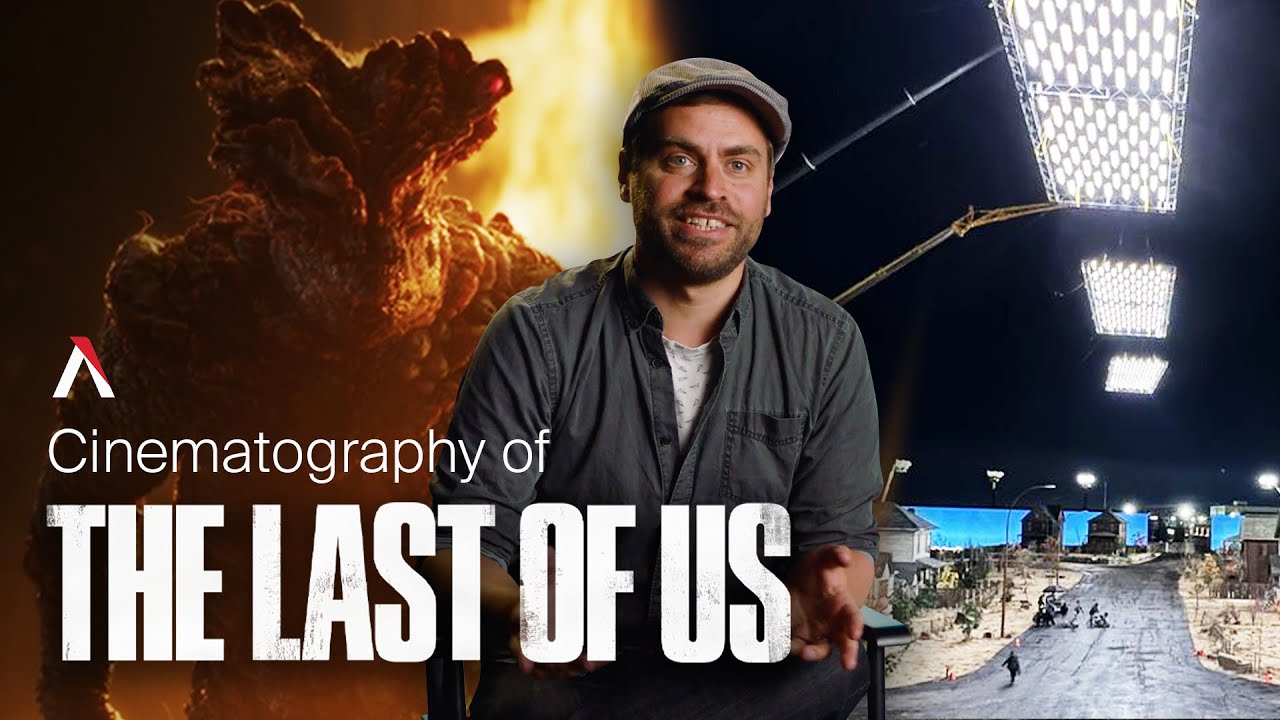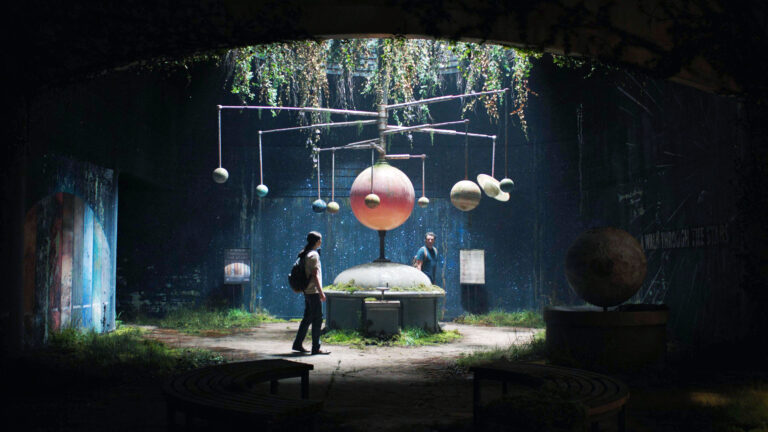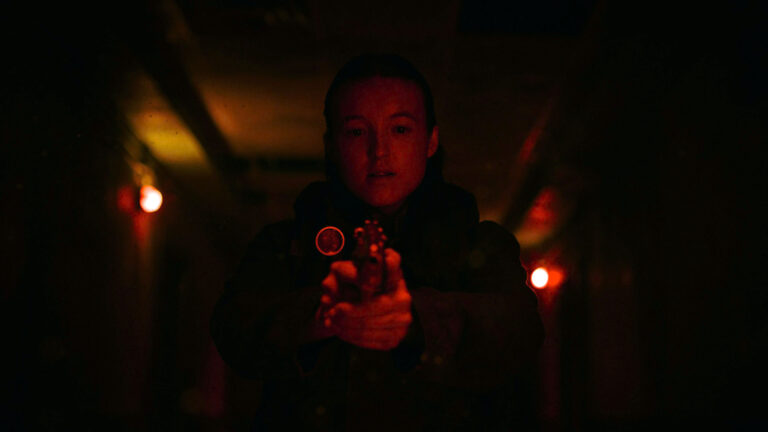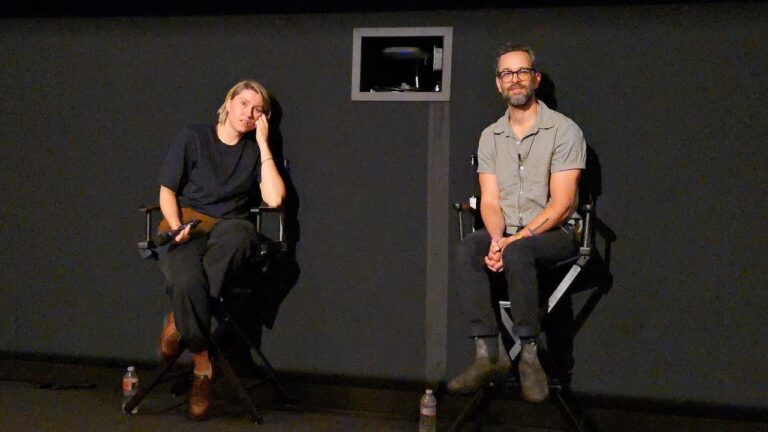Let’s face it – nobody tuned in to The Last of Us to gape at snazzy studio spotlights. We showed up for fungus, feels, and grit. And then, through the spores and heartbreak, Eben Bolter stepped behind the camera and absolutely nailed the apocalypse’s look. The guy lit doomsday so well, you could smell the dust.
You might know Bolter’s name from His Dark Materials or Avenue 5, but the man locked in his legend with Episodes 3, 4, and 5 of this HBO juggernaut. Let’s crank open the doors and peek into how this British cinematographer made TV’s end of days look so real and, let’s admit it, unexpectedly beautiful.
Keeping It Real When the World Stops Spinning
Forget generators and Hollywood trickery – Bolter had one rule: If you wouldn’t find it after 20 years without power, it stays out of frame. That’s not just eccentric artist-speak. It was his holy grail at every location, from overgrown towns to moonlit cul-de-sacs. Craig Mazin, the showrunner, hunted for someone with an eye for texture, mood, and honesty. Enter Bolter, lugging an armful of naturalistic philosophy.
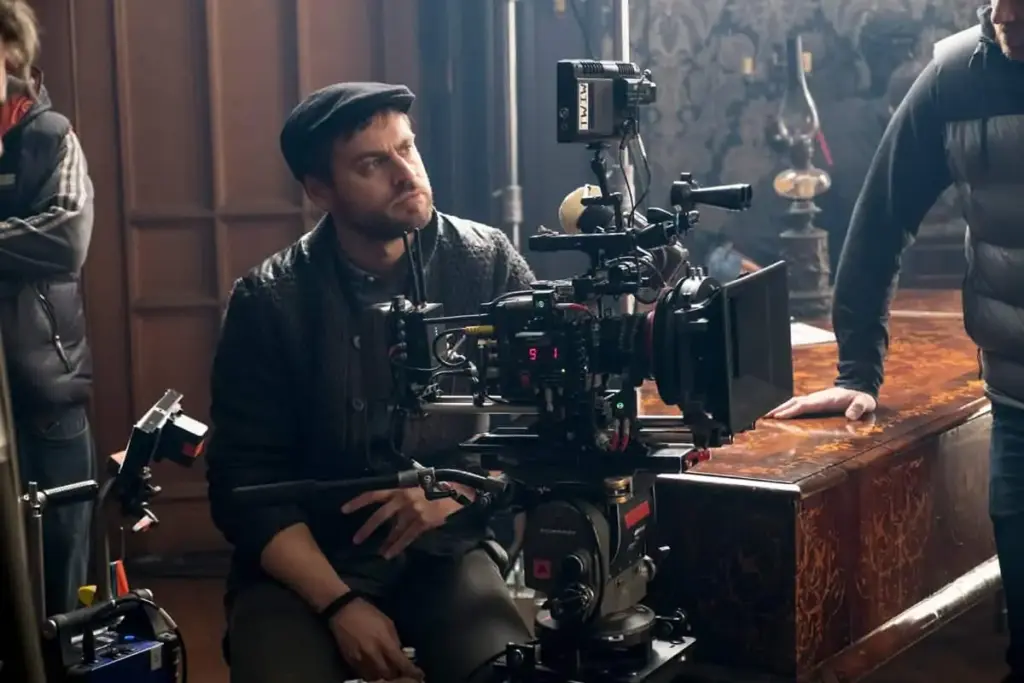
But why all the fuss about “naturalism”? Because post-apocalypse gets real, real fast. Electricity is out, batteries are as rare as a non-traumatized survivor, and every shadow counts. Bolter chased sunlight, moonbeams, matches, and the warm, ugly flicker of old bulbs. “We grounded everything in firm reality – lighting through windows or with 20-year-old practicals, embracing imperfection, and using the weather or time of day,” he told the American Society of Cinematographers.
And let’s be clear – Bolter’s not bragging. He sweats the basics:
- Sun and moon lead every scene.
- If it glows, it better be a candle, a headlamp, or a bulb older than the outbreak.
- Color matters; safe zones feel warm, threats feel icy.
- Handheld cameras, please, unless the story absolutely screams for a tripod.
The Art of Skip Lighting – Building a Real Home in “Long, Long Time”
Crack open Episode 3, and suddenly, The Last of Us isn’t just carnage and suspense. Here’s Bill and Frank, falling in love and building sanctuary one coffee mug, one lettuce seed, one heady piano duet at a time.
Bolter knew their tale needed more than post-apocalyptic gray. So he went tactile. He “skipped” sunlight off dishes, tablecloths, wallpaper, even Bill’s battered piano, flooding scenes with gentle, unforced illumination. It’s a Conrad Hall trick, he admits, but oh, how it works.
And you notice it. Day breaks in 2003 with harsh, summery light. Skip forward a decade and suddenly, warm amber glows from half-dead sconces, fireside embers, and the kind of daylight that belongs in a more hopeful world.
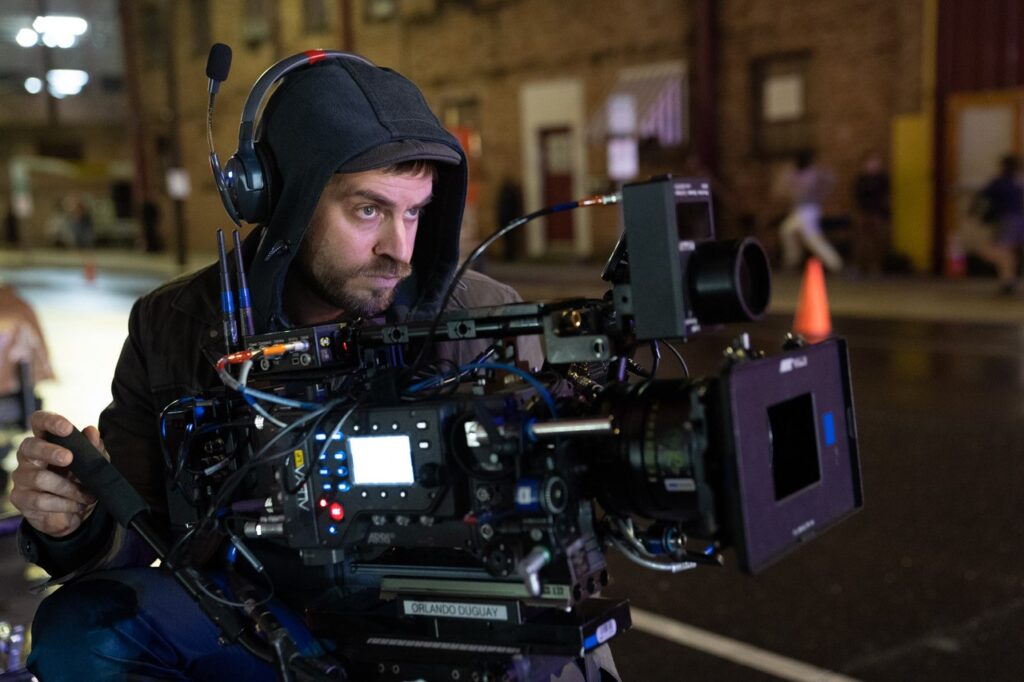
Moments make episodes, though. None beats that piano scene – the intimate, breathless tune that sails Bill and Frank from awkward strangers to soulmates. Bolter set up two ARRI Alexa Mini LF cameras and just let them play. Lights stayed low and honest. The result: every quiver in Offerman and Bartlett’s faces, every note, every gasp, all as honest as life. Bolter later admitted that he could have made the light prettier if he’d staged it for more takes, “but the magic would have evaporated.”
Their final day breaks gently. A soft, morning ray falls over them in bed. No fake fill, no highlight cheat – a natural dawn, filtered through lace curtains, using only a 12×12 UltraBounce rigged outside.
Gadgets and Gear: The Secret Tools of Apocalypse
You might expect flaming barrels and torches everywhere, right? Instead, Bolter stacked his kit with subtle flourishes:
- ARRI Alexa Mini LF for nearly all shots – craving that big, full-frame sensitivity.
- ARRI DNA T primes, built from old glass, so edges morph and bend just enough to feel lived-in.
- ISO settings up at 1600 to 2000, trying to grab every candle-flicker and shadow.
- That ZeeGee rig? It’s a weird handheld/steadicam hybrid that delivers the feel of someone nervously breathing, but saves us from seasickness. Not artsy for its own sake!
Roads, Rest Stops, and Real Campfires in Episode 4
Then, things slow down. Episode 4 doesn’t go big on monsters, but you can’t miss the quiet panic in every shadow. Joel and Ellie’s campfire scene is a masterclass in understated tension.
Bolter and his crew built a convincing flame with Litepanel Titans (yep, inside the fire pit), then softened that warmth with gels and custom flicker software. The result? You can almost smell the wood smoke and cheap Spam grilling. As Ellie cracks her first real smile, the forest glows with impossible kindness.
For the tunnels beneath Kansas City, Bolter got trickier. No real power means no movie-light cheat codes – just road flares, wonky LED tape in glove boxes, and a sun that barely bothers showing up. The dashboard scene especially sticks – it’s just dying daylight rimming two exhausted faces, signaling the tiniest moment of hope.
Snipers, LED Nets, and the Blue Nightmare of Episode 5
Now, the wild stuff. Episode 5 rockets us from dread into raw panic. Remember the sniper sequence? Bolter’s crew faced Calgary’s notorious winds. Standard movie lights? Out. Anything cloth or soft? Blown to pieces.
So they invented something new: the LED net. Yep, they hung 400 six-foot Astera Titan tubes, all bi-color and pixel-mapped, onto cranes like holiday lights on steroids. Winds cut through, but the light stayed. Each tube flickered with subtle “clouds,” painting the whole street cobalt blue, every corner tense, every shadow hiding something worse.
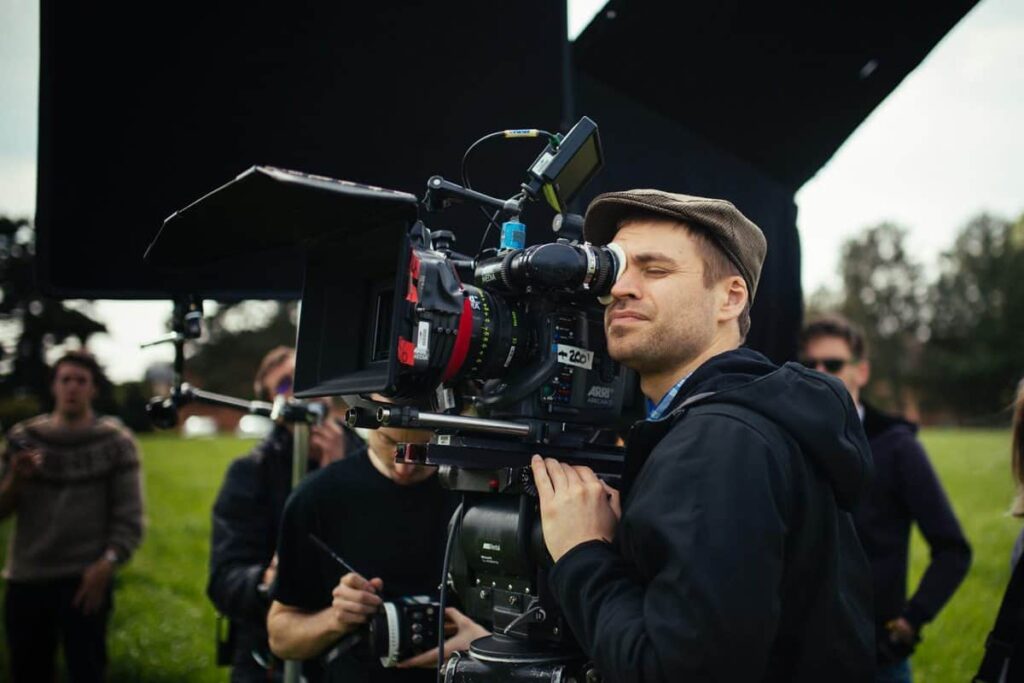
And there’s more. ARRI S360 SkyPanels hugged the block, adding depth and backlight. The only real “movie” moment – a massive 18K Arrimax up in a Condor – gave Joel his sniper’s halo. Paired with a wide 200-degree shutter, the shots turned every running child into a blur of panic and heartbreak, straight out of Saving Private Ryan.
Bolter didn’t stop at just cool tricks. The camera stays handheld, sucking us straight into chaos. Joel rushes upstairs, breath jagged, and the ZeeGee glides just above his shoulder. It’s as immersive – and nerve-wracking – as a first-person shooter, minus the cheesy game HUD.
A Color Story Told Through Character
Watch carefully: Bill’s isolated utopia in 2003 starts washed-out and rough. By the time love blooms, color explodes – red roses, zingy lettuce greens, sunlight on dust. Frank’s influence isn’t just narrative – it reboots the palette, makes the whole world richer.
Their last day tints cooler, more peaceful. Meanwhile, Joel and Ellie drive out of copper dusk into brittle, blue moonlight – marking their joint spiral from hesitant trust to flat-out desperation.
Influence Watch: Old-School Classics with New Twists
Bolter’s no lone wolf behind the lens. He name-dropped Saving Private Ryan (those frozen Civilian-vs-sniper showdowns). Alien? For “terror hiding in the dark.” Traces of Children of Men creep in, too – you see it in the handheld, one-take bravado. But Bolter insists: story clarity always beats technical boasting.
Working Together: Lighting, Design, and VFX
Eben didn’t work in a vacuum. He and production designer John Paino matched paint chips to old bulb falloff. Alex Wang’s VFX team masterfully extended ruined cityscapes but always worked from Bolter’s light cues. If fire hit an infected corpse on set, it would glow the same in digital rage.
Fans and Critics: The Social Buzz
Let’s talk reception: Viewers lost it over Episode 3’s “gentle afternoon glow.” Twitter threads praised how the Bill-Frank arc “looks like a lost memory, sweet and sad.” Meanwhile, Episode 5 spooked fans with its nerve-rattling night blue – one viral TikTok called it “the most beautiful panic attack on TV.”
Industry buzz didn’t sleep either. Bolter nabbed an ASC nomination for his naturalistic wizardry and rumor has it there’s Emmy talk swirling in the May 2025 air.
Final Spark: When Darkness Blooms and TV Glows
The lights go down, but the story flares up. Bolter’s work lingers, haunting you longer than any clicker snarl or runner’s shriek. Every candle, every moonlit porch, every glance between survivors feels true. In the apocalypse, real intimacy and horror start where the grid ends – and that’s where Eben Bolter’s lens shines brightest.

